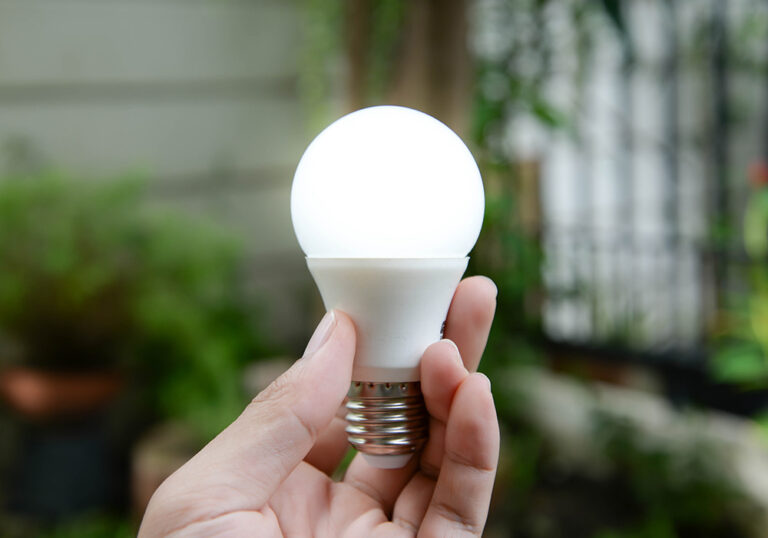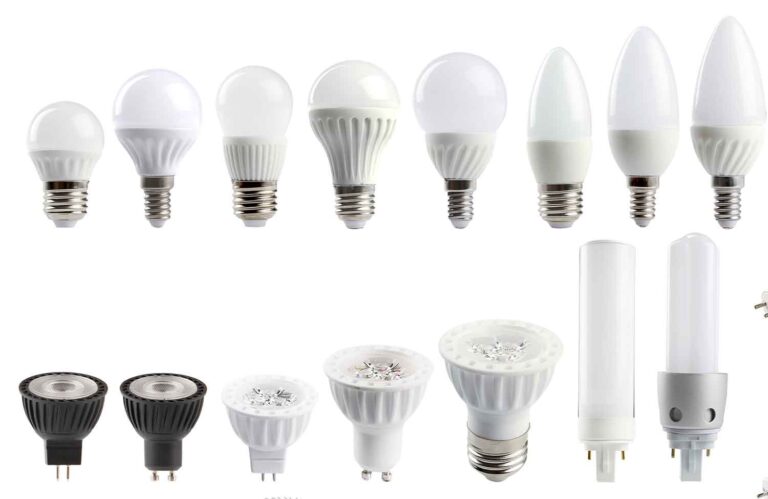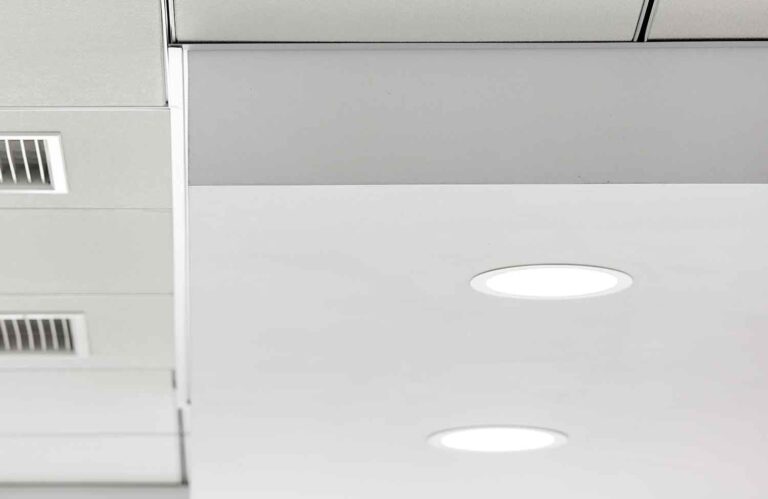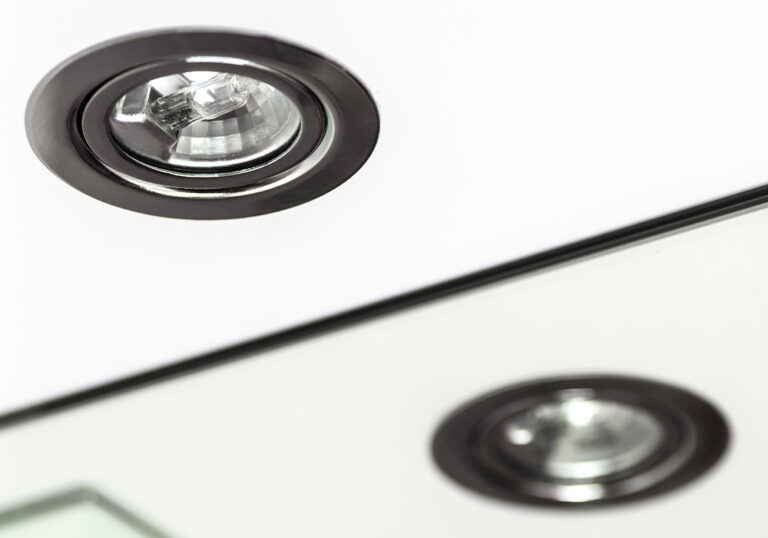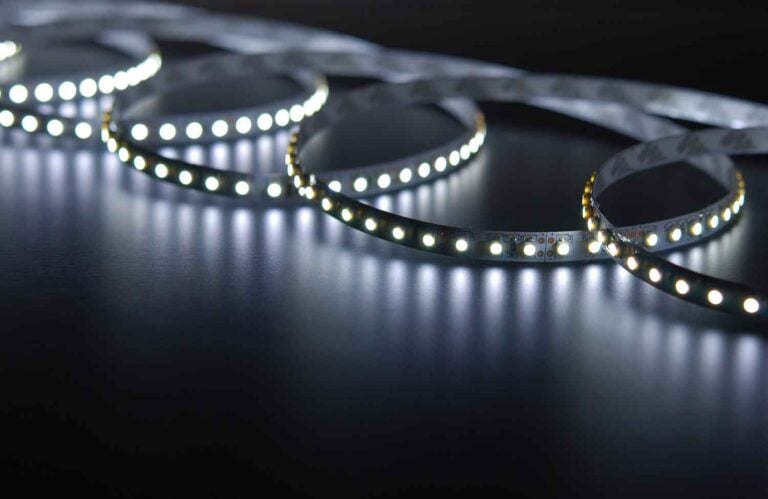Can You Paint LED Light Bulbs?
Painting your LED bulbs is a cheap and easy way to add some creative flair to your LED lighting fixtures. If you were planning on this DIY project, you may be concerned about whether it’s safe to paint light bulbs. While this isn’t a good idea for traditional bulb types, LED bulbs offer more customizability due to the minimal heat they give off when lit.
Yes, you can paint LED light bulbs without impacting their safety during operation. To do so, you must follow the right technique and use the right type of paint on your LED bulbs. The best type of paint to use on LED bulbs is a non-water based glass paint; alternatively, you could use acrylic paint, spray paint, or sharpie markers to colour your LEDs.
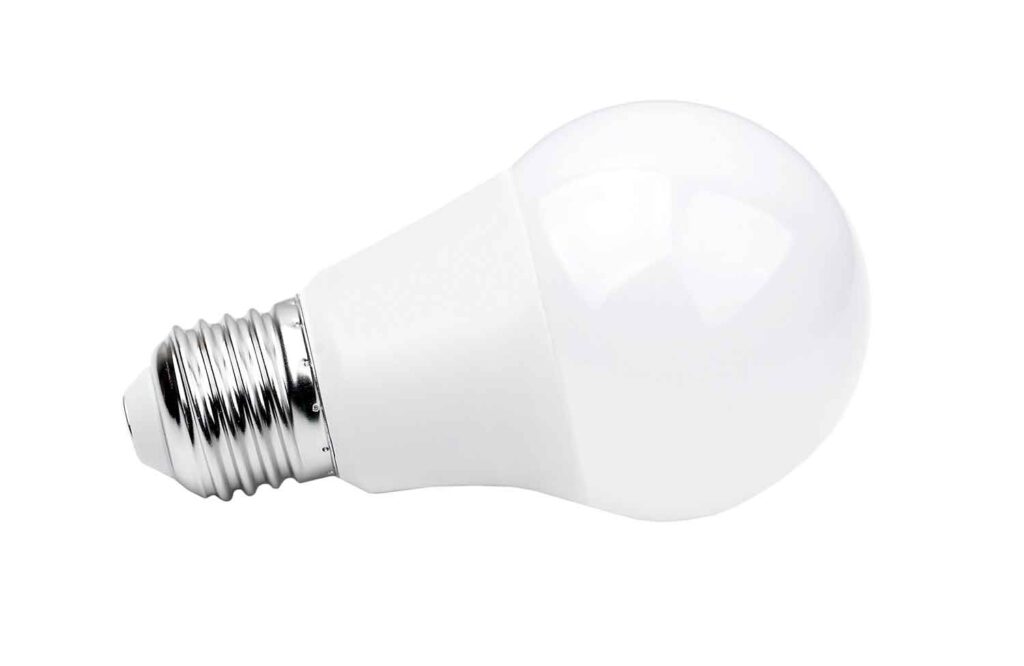
Can You Paint LED Light Bulbs?
Yes, you can paint LED light bulbs, providing you follow the right technique and use the correct tools and paint. As they’re cheaper, buying regular LED lights and painting them yourself can be a cost-effective alternative to purchasing coloured LEDs.
You can fully customise the colours and design of your LED light bulbs with this easy DIY project. With that said, there are some safety considerations to understand before you start carrying out the light painting process. You must first be aware of what type of paint is safe to use on bulbs, how to paint the bulbs properly, and how the bulbs may be affected by the paint afterwards. We discuss everything you need to know about painting LED light bulbs in the remainder of this article.
Is it Safe to Paint LED Light Bulbs?
It is generally safe to paint LED light bulbs. With traditional bulbs, i.e. incandescent, halogen, and fluorescent bulbs, this is an unsafe practice due to the heat that these bulbs generate. However, as LED lights give off very little heat, you can paint them safely without creating a potential fire hazard.
Traditional bulbs generate heat during operation due to the light-producing components that they contain. For instance, incandescent and halogen bulbs both contain heated filaments that warm up to the point that they glow; this mechanism causes the bulb to light up, generating a significant amount of heat in the process. Excess heat that these traditional bulbs produce will dissipate into the surrounding environment via the bulb’s surface. As long as nothing is covering it, the heat will safely escape, preventing the bulb from overheating.
This is why it’s unsafe to paint a traditional bulb; the paint would act like a layer of insulation, causing the bulb to overheat. If the bulb gets too hot, the heat will ultimately cause the internal filament to snap and ‘blow’. At extreme temperatures, the glass of the bulb may even shatter or explode. This is obviously a major health and fire hazard that makes it highly unsafe to paint regular incandescent, halogen, or fluorescent bulbs.
LED bulbs, on the other hand, work in a different way to produce light. These bulbs don’t involve a heated filament or any types of gases. Instead, LED bulbs contain ‘light emitting diodes’, controlled by a microchip also held within the bulb. The components are powered by an electrical current; although they generate some heat, the heat that an LED bulb produces is minimal compared to other types of bulbs. It’s therefore safe to paint LED light bulbs without creating a potential fire hazard.
Will Paint Cause LED Bulbs to Blow?
Paint will not cause LED bulbs to blow. In fact, it isn’t even possible for an LED bulb to ‘blow’ in the traditional sense; as we’ve just explained, LED bulbs can’t blow like incandescent and halogen bulbs as they lack the wire filament that these bulbs contain. With that said, painting LED bulbs can shorten their lifespan and cause them to dim prematurely.
A layer of paint will slightly raise the temperature in the LED bulbs. Although this heat isn’t enough to create a safety hazard, it will cause the bulbs to deteriorate at a faster rate. Another term for this is ‘lumen degradation’; instead of blowing entirely, the LED bulbs will gradually lose their brightness as their components wear down. So, this isn’t a major concern in terms of safety, but you should be aware that painting your LED bulbs may shorten their overall lifespan.
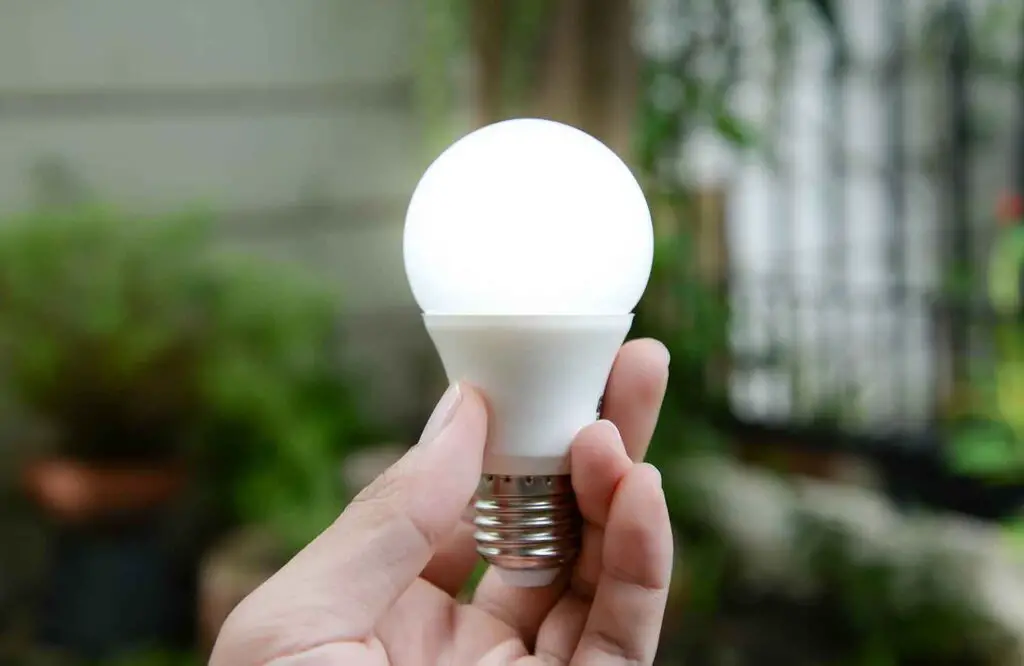
What is the Best Type of Paint for LED Light Bulbs?
The best paint to use on LED light bulbs is a non-water-based glass paint. This type of paint will resist evaporation when the bulb is lit, withstanding any heat that the bulb may give off during operation. It is inexpensive and readily available, and will hold its colour under warm temperatures. The only drawback to heat-resistant paint is that it may inhibit the bulb’s capacity to shine as brightly.
Oppositely, the worst type of paint to use on LED bulbs would be a water-based formula. This type of paint will simply evaporate off the bulb via the heat it generates when lit. Water-based paints are also prone to changing colour under high temperatures, ruining the aesthetics of your painted bulbs. Also, you should absolutely avoid using oil paint on LED light bulbs; this type of paint is highly flammable and would therefore create a significant fire hazard if used to paint a bulb.
Click here to see lightbulb paint on Amazon

How to Paint LED Light Bulbs (Step-By-Step)
To reiterate, you should only use this method to paint LED lights, and not incandescent, halogen, or fluorescent bulbs.
1. Decide Whether You Want Bulbs to Have a Diffused Look
Firstly, you must decide whether you want the light from your LED bulbs to look diffused or not. If so, use a fine sandpaper to lightly sand the surface of the bulbs. You should follow this step if you want the bulbs to give off a soft, coloured light; skip this step if this is not the visual effect you want to achieve.
2. Clean Bulbs with Rubbing Alcohol
Clean the surface of the LED bulbs using a paper towel and some kitchen roll or cloth. This is to remove any grease or dust from the bulbs before you start painting.
3. Add a Layer of Paint Primer for Opacity
If you want to give the painted bulb a fully opaque appearance, add a layer of paint primer before painting. Paint primer will enhance the opacity of the colour by helping the paint adhere to the surface of the bulbs.
4. Paint Bulbs
Now that you’ve carried out any necessary preparations, you can begin painting the bulbs. Paint all parts of the bulb using a thin layer of your chosen paint. Make sure not to miss any spots, as white light will shine through the unpainted gaps. Once the first layer dries, continue to add thin layers of paint to the bulb until you reach the desired opacity of the colour.
5. Wait for Paint to Dry
Wait for the last layer of paint to dry completely before trying out your LED bulbs. Plug in the bulbs and switch them on to see the results; if the colour isn’t strong enough or you missed any spots, you can go back and repaint the bulbs.
Can You Paint LED Light Bulbs with Acrylic Paint?
You can paint LED light bulbs with acrylic paint. However, this is not the best type of paint to use if you want a longer lasting effect. Acrylic paint is a water-based formula and therefore won’t hold up against the bulb’s heat long-term.
As we’ve explained, water-based paint formulas are not the best choice when painting LED light bulbs. These paints are more susceptible to high-temperatures; they’re likely to evaporate, change colour, or burn under prolonged periods of exposure to heat. So, although acrylic paints are fine for temporary modifications, you should opt for a heat-resistant alternative if you want longevity from your painted bulbs.
Can You Use Sharpie Markers to Colour LED Light Bulbs?
Yes, you can use Sharpie markers to colour LED light bulbs. This is a cheap alternative to using heat-resistant paint, and is a preferable option for those unskilled in using a paintbrush.
Sharpie markers are water-resistant, fade-resistant, and heat-resistant to temperatures up to 260°C. On top of this, Sharpies come in a range of colours, with 40 unique shades to choose from. They’re ideal if you want to get creative with the designs and colour combinations on your LED bulbs. An additional benefit of using Sharpie markers is that you can easily remove the colour from the bulb; despite being ‘permanent markers’, the Sharpie ink will come off the bulbs with a warm towel and some rubbing alcohol.
Can You Paint LED Light Bulbs with Spray Paint?
Yes, you can paint LED light bulbs using spray paint. This is another cost-effective way to recolour your LED lights that won’t require much skill to carry out. It’s also an easier method if you want your LED lights to appear diffused without needing sanding the bulbs first.
To spray paint LED lights, you’ll need metallic spray glass paint, painters tape, and protective gear like gloves and goggles. Use the painters tape to cover up the parts of the bulb or fixture that you don’t want to paint; you should also cover the workspace or area that you’re spraying in to protect it from any overspray. Make sure that the area in which you’re working is well-ventilated. Spray the LED bulbs using your chosen spray paint and wait for them to dry completely before using them.
Can You Paint LED Light Bulbs to Make them Look Warmer?
You can use paint on LED light bulbs to make the light they emit appear warmer. It’s an easy mistake to purchase LED bulbs with the wrong ‘correlated colour temperature’ (CCT), i.e. the wrong shade of white. If you prefer warm white, you can counteract the cool, blue-toned light of the incorrect LEDs using yellow paint.
The most challenging aspect of this is picking the right shade of yellow for the colour you wish to achieve. The colour of the paint you choose may not be the exact colour that the bulb emits when lit. For instance, if the LEDs are particularly cool-toned, a pale yellow will only work to neutralise the light; they will emit a balanced white rather than a warmer shade. You may need to use a deeper shade of yellow, or even orange, to achieve a strong warm glow.
How Do You Remove Paint from LED Light Bulbs?
You can use substances like nail polish remover and rubbing alcohol to remove paint from your LED bulbs. It may be the case that you only want to paint the LEDs for a one-off event; or, you may change your mind about the colour or design of your painted bulbs. Fortunately, you have the option of removing the paint from your LED lights if any of these situations arise.
One example of an effective substance you can use to remove paint from your LED bulbs is nail polish remover. Nail polish remover contains acetone, which is a solvent that breaks down tough compounds in other substances like nail polish and paint. You simply place some nail polish remover onto a microfibre cloth, rub it over the bulb’s surface, then wait. After a little while, use a dry cloth to remove the paint from the bulb.
Alcohol is another substance you can use to remove paint from LED bulbs. Alcohol works to remove paint by dissolving the polymers binding the paint particles together. To use this substance on your painted bulbs, soak a lint-free cloth in rubbing alcohol; squeeze the cloth to remove excess liquid, before rubbing it over the bulb to remove the paint.
As an important note, do not place any rags or cloths you use with substances like nail polish remover or alcohol in the washing machine. These substances are highly flammable; you will therefore create a serious fire hazard by placing the cloths in your washer or dryer. Dispose of them appropriately, along with any clothes you wear during the process.

